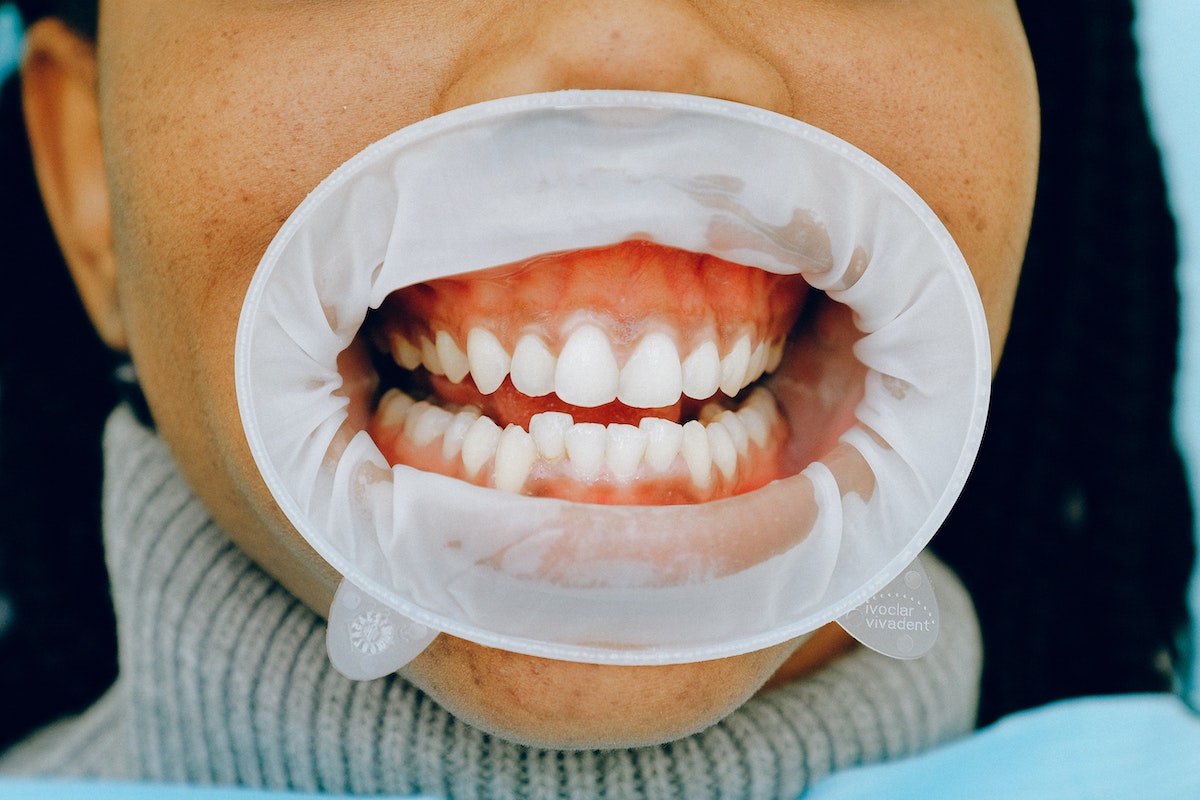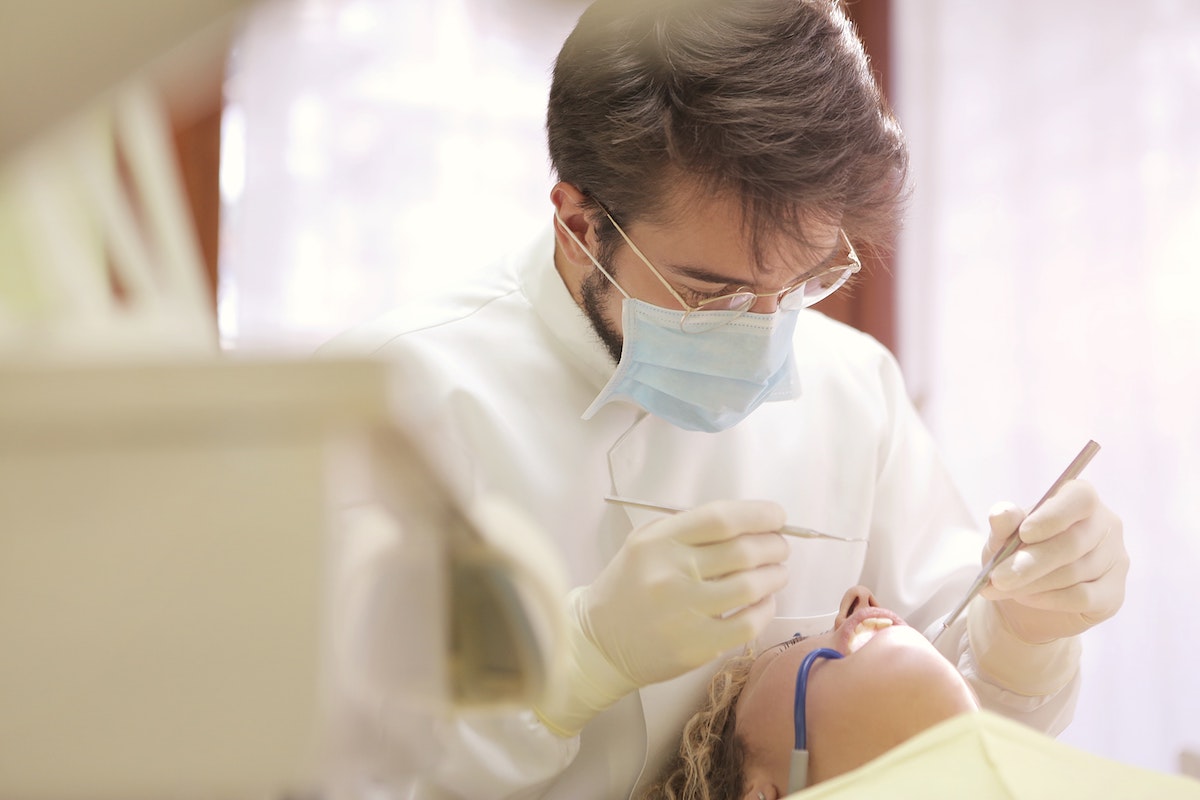Nearly half of adults age 30 and over have gum disease, according to the Centers for Disease Control and Prevention (CDC). Problems with gums may include seeing blood when brushing or flossing teeth. Puffy or dark red gums may also signal the beginnings of gum disease in adults. Gum disease starts with a buildup of plaque and tartar on the teeth. If left untreated, gum disease can lead to infection and bone loss below the gum line—and even tooth loss.
Knowing the early warning signs, risk factors, and treatments for gum disease can bring peace of mind, as well as an appointment with a dentist.
What is Gum Disease?
Gum disease is an infection of the tissues that surround and support teeth. It is caused by plaque, the sticky film of bacteria that constantly forms on teeth. Plaque bacteria produces acids after a meal or a drink. These acids can destroy tooth enamel and cause cavities and a mild form of gum disease.
Plaque can also develop under the gums on tooth roots and break down the bones that support teeth. When bones are affected, this is a more serious form of gum disease.
Warning Signs of Gum Disease

So what are some of the warning signs that can act as red flags for patients, perhaps a signal of something going on inside their mouths?
Bleeding, Red, or Swollen Gums. Healthy gums are pink and firm, not bright red, dark red or purple. If a person’s gums become red or puffy/swollen, or blood starts appearing when brushing or flossing teeth, this may be an early sign of gum disease. It is not natural to see bleeding gums when brushing or flossing. As plaque and tartar stay on teeth, gums can become swollen, red, and inflamed, causing them to bleed easily. Swollen gums that last longer than 1-2 days may be a sign of gum disease. If gums are swollen for more than 2 weeks, a visit to the dentist is a good idea.
Gums that Get Smaller or Recede. If a person’s teeth look longer than they used to, chances are slim that they are growing. In reality, their gums are shrinking, according to the American Dental Association. Many people don’t even notice that their gums have receded because it is a gradual process. The gums are pulling away from the teeth.
Pain and Sensitivity. Feeling pain when the gums are touched and tooth sensitivity to cold drinks can be warning signs. If a sip of a cold drink causes flinching, a person’s teeth may be signaling something. That’s a symptom of gum disease that often goes hand in hand with shrinking gums.
Bad Breath. Bad breath can also be an indicator of early stage gum disease. Usually caused by plaque buildup on the tongue, bad breath may be a sign that plaque and bacteria aren’t being properly removed.
Apart from the physical aspect, bad breath can have social implications, causing a negative self image when others avoid the person with bad breath.
Loose or Shifting Teeth. When gum disease attacks the bones that hold teeth in place, teeth can shift and become loose. A person’s “bite” may also feel different because the teeth do not fit together as they once did.
An Abscess on the Gum. An abscess is a pocket of pus in the tissues of the gum. It looks like a small red ball pushing out of the swollen gum. An abscess can cause the gums to pull away from the teeth.
How Does Gum Disease Happen? What are Risk Factors?
There are several things that can put a person at greater risk for gum disease. While some of them can’t be controlled, others are a matter of the choices we make.
- Crooked Teeth. The American Dental Association reports that crooked teeth can increase your risk of plaque buildup because teeth are more difficult to clean thoroughly.
- Genetics. Family history can be a factor. If one or both of your parents had gum disease, there is a greater likelihood you are prone to it as well.
- Smoking. Smoking alters the normal function of gum tissue cells and makes your mouth more vulnerable to infection. Smoking weakens your gums’ defense and makes it more difficult for your gums to recover. So if you chew tobacco, smoke cigarettes or smoke pipes, you are at greater risk for gum disease.
- Aging. Older people can be at greater risk because of declining physical status or lack of routine dental care.
- Grinding and clenching your teeth. Clenching or grinding your teeth can put too much force on the teeth, causing gums to recede.
- Hormonal changes, such as those related to pregnancy or menopause. During periods of heightened or shifting hormones, the gums become more vulnerable to gum disease. If pregnant, you may notice an increase in your gums’ sensitivity.
- Poor oral health habits. For good oral health, the American Dental Association recommends flossing teeth at least once a day, and brushing at least twice a day for two minutes. Most people should see the dentist every six months for a cleaning to prevent plaque buildup and, if necessary, to remove tartar from the teeth.
- Body piercing of the lip or tongue. Jewelry can rub the gums and irritate them to the point that gum tissue is worn away.
Other risk factors include the following:
- Recreational drug use, such as smoking marijuana or vaping
- Obesity
- Inadequate nutrition, including vitamin C deficiencies
- Certain medications that cause dry mouth or gum changes
- Conditions that cause decreased immunity, such as leukemia, HIV/AIDS and cancer treatments
- Certain diseases, such as rheumatoid arthritis and Crohn’s disease.
What Can I Do Now?

Having symptoms of gum disease can be worrisome, but the Dental Health Society says that when gum disease is caught early, it can often be reversed by improving dental hygiene habits, and by a thorough professional cleaning from a dentist at least twice a year. Routine brushing and flossing at home can remove some plaque, and professional cleaning from a dentist can usually take care of the rest. A dentist can also treat more serious forms of gum disease that have progressed beyond the early stages.
Treatments For Gum Disease
A dentist visit is the best way to address concerns about gum disease. The good news with gum disease is that it can often be treated successfully. The first step usually involves a special cleaning called “scaling and root planing.”
Scaling
Anyone who has had a professional dental cleaning has had some scaling done to their teeth. When a dental hygienist uses a hand tool to scrape plaque off teeth, that’s scaling.
Deep Cleaning
Deep cleaning and scaling go deeper than a typical cleaning. The scraping is done not only at the gum line, but below it, closer to the root. There is also a more extensive procedure to remove hardened plaque.
Root Planing
Root planing smoothes the exposed surface of the roots after the plaque has been removed. This helps the gum tissue reattach to the root and tooth so healing can begin.
Patients may ask the dentist how serious their case of gum disease is and which treatment options are best. Other questions to ask include the following:
- How many dental visits are necessary for cleaning or deep cleaning?
- How does a patient clean the mouth thoroughly to prevent plaque buildup? Is the patient’s current daily cleaning at home adequate?
- Is there a special toothbrush required for daily cleaning at home?
- Is there a special toothpaste that helps prevent plaque buildup?
- Are there any other tools besides a toothbrush that help clean the mouth thoroughly and prevent more plaque buildup?
To schedule a dental checkup, use our online search tool to find a dentist near you.


